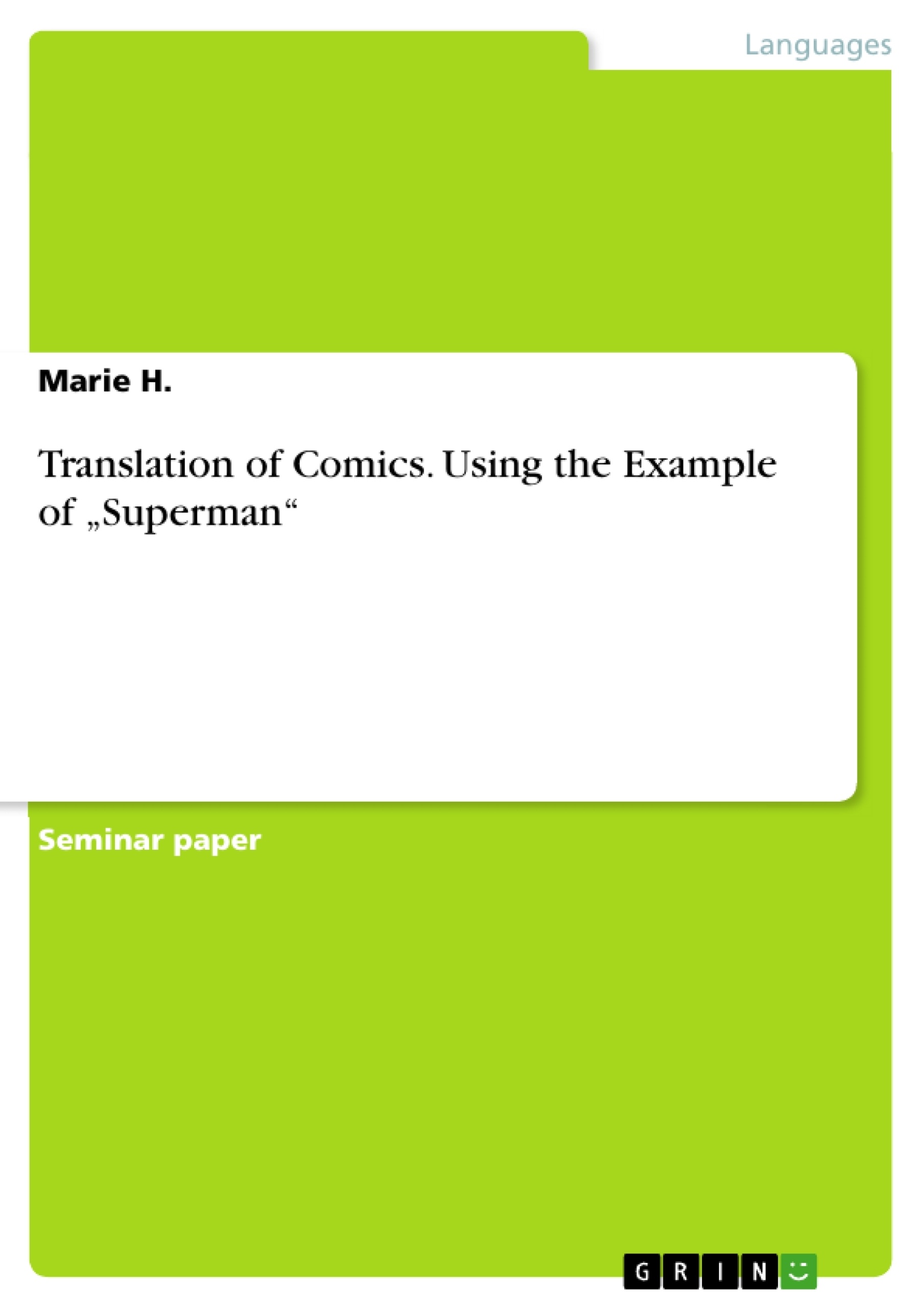Comics are “texts organised into sequential units, graphically separated from each other” (Saraceni 2003: 5) and “employ […] both words and pictures” (ibid.). First, American comics were translated and pirated versions of works done by Rodolphe Töpffer, a Swiss illustrator (cf. Duncan, Smith 2009: 25). In 1895, Richard F. Outcault published funny illustrations in the Sunday edition of Pulitzer’s New York World, focusing on the New York Slums (cf. Schröder 1982: 12). “Hogan’s Alley” soon became a popular weekly series featuring a little boy as the protagonist: The Yellow Kid, named after the accidentally “new” color of its nightgown (cf. ibid.). Outcault experimented with panels and word balloons, switching “back and forth from Victorian to modern comic styles” (Petersen 2011: 98). The Yellow Kid polarized the newspaper audience: on the one hand, people started anti-comic campaigns; on the other hand, it became a huge success for Pulitzer (cf. Schröder 1982: 12-13). However, Pulitzer’s success through The Yellow Kid led to a war between him and William R.
Inhaltsverzeichnis (Table of Contents)
- Introduction
- How to Analyze Comics
- Semiotic Translation
- Translating Images
- Blend between Words and Pictures
- Collaboration between Words and Pictures
- A Man of Steel for a New Generation
- An Analysis of the Original Version
- Evaluation of the German Translation
- Conclusion
Zielsetzung und Themenschwerpunkte (Objectives and Key Themes)
This term paper aims to analyze a spread from the comic book Superman: Earth One by focusing on the translation of images. The paper utilizes theories of comic translation to examine excerpts from the comic book, exploring the relationship between words and images. The German translation is also analyzed, with the goal of determining whether the translation made errors and identifying potential reasons for these errors.
- Translation of images in comics
- Relationship between words and images
- Analysis of the German translation of Superman: Earth One
- Evaluation of the translation process
- The iconic and symbolic nature of Superman in American comic history
Zusammenfassung der Kapitel (Chapter Summaries)
- Introduction: This chapter provides an introduction to comics as a medium, highlighting their history and evolution, particularly in the United States. It also introduces the key sources used in the analysis, emphasizing the importance of Superman: Earth One as the primary focus.
- How to Analyze Comics: This chapter explores various theories of comic translation, primarily focusing on Jakobson's concept of intersemiotic translation. It discusses different perspectives on interpreting verbal and non-verbal signs in the context of comics and explores the translation process from a theoretical standpoint.
- A Man of Steel for a New Generation: This chapter presents an analysis of a specific spread from Superman: Earth One, examining the interplay between words and images and evaluating the effectiveness of the German translation. It focuses on identifying potential errors and analyzing the translation process in detail.
Schlüsselwörter (Keywords)
The primary keywords and focus topics of this paper include comic translation, intersemiotic translation, image analysis, word-image relationship, German translation, Superman: Earth One, superhero iconography, and cultural symbolism.
- Quote paper
- Marie H. (Author), 2015, Translation of Comics. Using the Example of „Superman“, Munich, GRIN Verlag, https://www.hausarbeiten.de/document/295984


